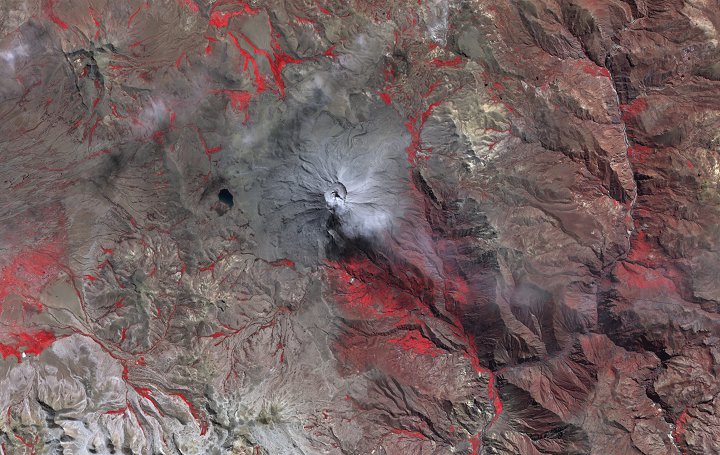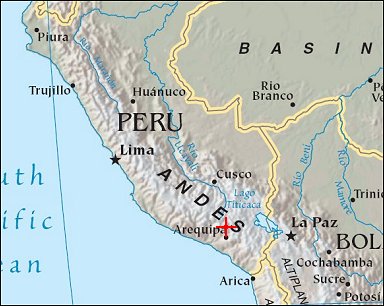| Earth from Space is a free eBook describing our planet from a satellite's perspective. Fore more information, please read the About pages. |

|

Home  South America South America  Peru Peru  Mount Ubinas Mount Ubinas |
|






|
|
Mount UbinasPosition of center of photo (Lat/Long): [-16.36368/-70.89770] |
|
  A faint white plume rose from the summit of the Ubinas volcano on May 8, 2006, when the Advanced Spaceborne Thermal Emission and Reflection Radiometer (ASTER) on NASA’s Terra satellite captured this image. Peru’s most active volcano, Ubinas forced evacuations on April 21, after a series of explosions sent ash, gas, and lava fragments more than three kilometers into the air, said the U.S. Geological Survey in its weekly Volcanic Activity Report. The fumes caused respiratory problems, and livestock fell ill or died after eating ash-coated grass. A faint white plume rose from the summit of the Ubinas volcano on May 8, 2006, when the Advanced Spaceborne Thermal Emission and Reflection Radiometer (ASTER) on NASA’s Terra satellite captured this image. Peru’s most active volcano, Ubinas forced evacuations on April 21, after a series of explosions sent ash, gas, and lava fragments more than three kilometers into the air, said the U.S. Geological Survey in its weekly Volcanic Activity Report. The fumes caused respiratory problems, and livestock fell ill or died after eating ash-coated grass.
Evidence that people live on the volcano’s fertile slopes can be seen in this image. Crop-planted fields are bright red flecks against the dull natural vegetation on the south and east slopes of the volcano. In the lower right corner of the image, the vegetation is a duller tone of red than elsewhere in the image. The difference in color is at least partially because there is less agriculture in the region, but may also have resulted from ash dusting the ground. The volcano itself has steep, lava-strewn slopes topped by a round caldera. The cliff-like caldera walls drop 150 meters to the caldera floor, where a deep funnel-shaped vent opens. Ubinas sits in Southern Peru, due west of Lake Titicaca. |
| Source of material: NASA |
Further information: WikiPedia article on Mount Ubinas
Last Update: 2011-03-30

